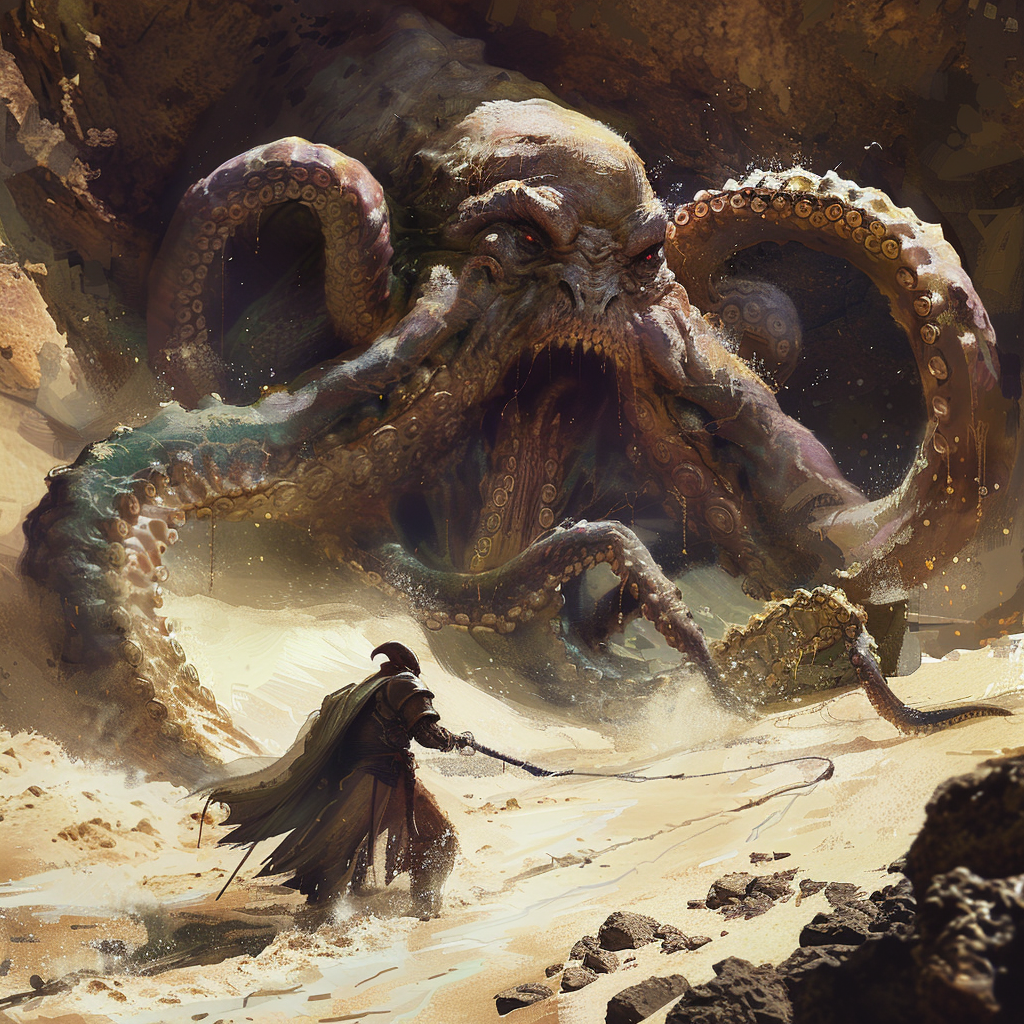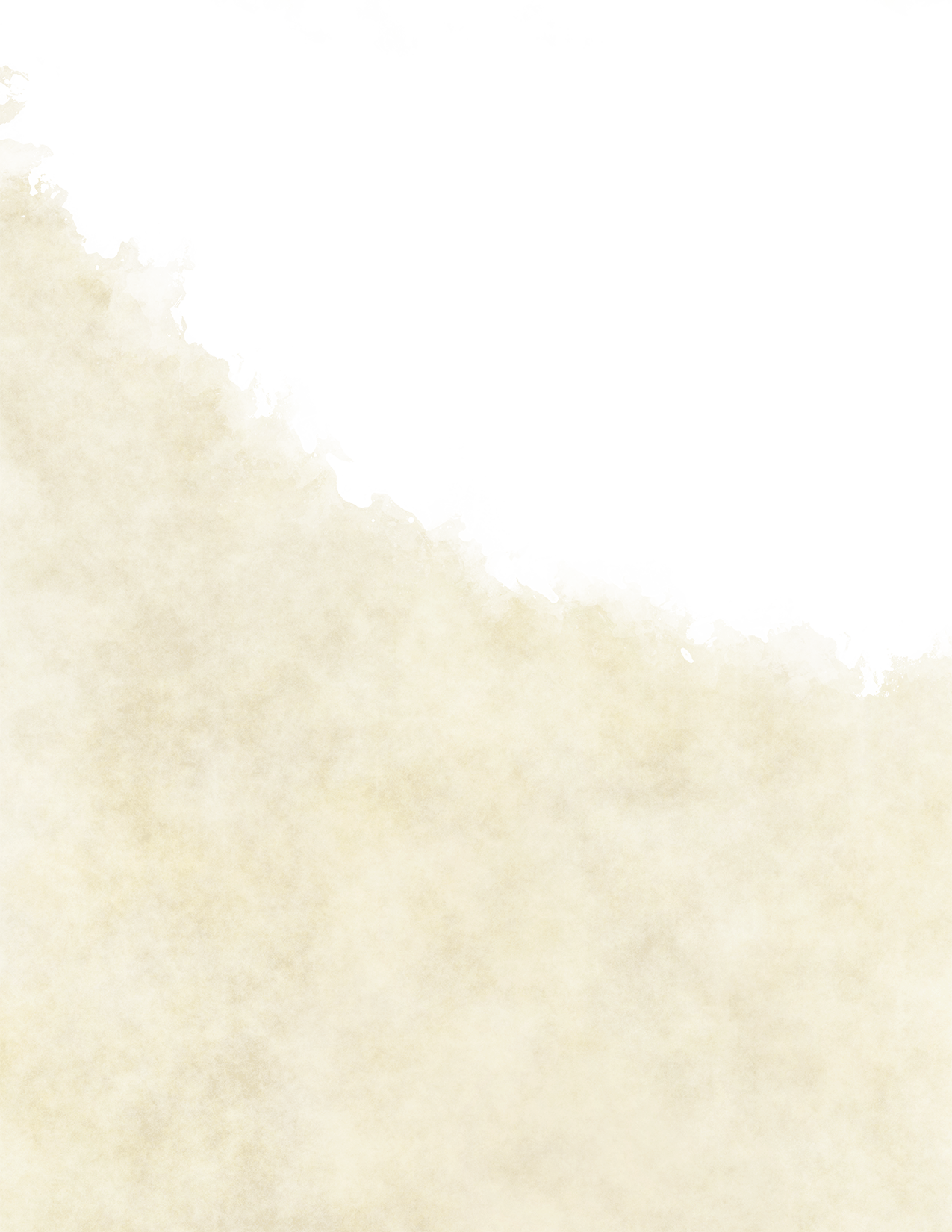Common Sense Claw and Bite Attacks
In D&D we often find creatures that have multiattack and do one bite and one claw attack, as if, after they bite a creature, they would courteously stop biting and take a step back.
This is hard to imagine. Consider using these optional rules for claw and bite attacks to make them more realistic and combat more exciting.
That said, many creatures' attacks are well thought out. If so, don't mess with them. This resource is intended to improve less-intuitive or less-exciting monsters.
Clawed Creatures
In nature, claws are used for several purposes: climbing, digging, slashing to deter an attacker, slashing as an attack to weaken or knock prey off balance, and seizing prey. In combat, this reduces to three attack types: slash, slam, and seize.
Slash attack
Slash attacks from claws are melee attacks that do slashing damage on a hit.
Slam attack
A creature can make a slam attack using its Strength to attempt to knock down a target creature of up to one size larger. On a hit, the target suffers bludgeoning damage, and must succeed on an Strength (Athletics) or Dexterity (Acrobatics) save or be knocked prone.
Seize attack
Seize attacks with claws are made with Dexterity or Strength and do piercing damage on a hit and the target creature is grappled. If the target creature is one size larger, the grapple does not reduce its speed to zero; it is merely encumbered. For creatures two or more sizes larger, apply the optional rules for climbing on larger creature (DMG pg. 271). The target creature can use an action to escape this grapple with a contested Strength (Athletics or Dexterity (Acrobatics) vs attacker Strength (Athletics) check, as usual. See Common Sense Grappling and Restraining for optional rules.
Bite attack (clawed creature)
When a clawed creature has grappled a target, it may make a bite attack with advantage as a bonus action, or on a later action while the target is grappled, depending on challenge rating.
Devastating bites
Bites targeting vital areas are a predator's deadliest attack. A bitten creature has disadvantage to escape a grapple.
Reckless bites
For clawed predators, unless a target is fleeing, a bite attack without first seizing generally has disadvantage.
Tearing
If the target creature is grappled and the attacker hits with a bite attack, it may take a bite out of the target, dealing additional slashing damage on the same attack or as a separate action, depending on challenge rating. If the tear is a separate attack or action the biting creature generally has advantage or can tear automatically. After a tear attack the bitten creature no longer has disadvantage to escape a grapple.
Revised Clawed Creatures
Black Bear (revised)
Medium beast, unaligned
- Armor Class 11 (natural armor)
- Hit Points 19 (3d8 + 6)
- Speed 40 ft., climb 30 ft.
STR DEX CON INT WIS CHA 15 (+2) 10 (+0) 14 (+2) 2 (-4) 12 (+1) 7 (-2)
- Skills/Senses Perception +3, passive Perception 13
- Challenge 1/2 (100 XP)
Keen smell. The bear has advantage on Wisdom (Perception) checks relying on smell.
Charge. The bear may make a seize or slam attack as a bonus action after a dash.
Actions
Multiattack. The bear makes two melee attacks.
Slash. Melee Weapon Attack: +4 to hit, reach 5 ft., one target. Hit 5 (1d6 + 2) slashing damage.
Slam. Melee Weapon Attack: +4 to hit, reach 5 ft., one target. Hit 4 (1d4 + 2) bludgeoning damage. Target must succeed on a DC 12 Strength (Athletics) or Dexterity (Acrobatics) saving throw or be knocked prone.
Seize Melee Weapon Attack +4 to hit, reach 5 ft., one target. Hit 4 (1d4 + 2) piercing damage. Target is grappled.
Bite Melee Weapon Attack +4 to hit (advantage), reach 5 ft., one grappled creature. Hit 7 (2d4 + 2) piercing damage and the target creature has disadvantage to escape a grapple.
Owlbear (revised)
Large monosity, unaligned
- Armor Class 13 (natural armor)
- Hit Points 59 (7d10 + 21)
- Speed 40 ft.
STR DEX CON INT WIS CHA 20 (+5) 12 (+1) 17 (+3) 3 (-4) 12 (+1) 7 (-2)
- Skills Perception +3
- Senses darkvision 60 ft., passive Perception 13
- Challenge 3 (450 XP)
Keen Sight and Smell. The owlbear has advantage on Wisdom (Perception) checks that rely on sight or smell.
Predator. The owlbear makes beak attacks with advantage on a large or smaller creature it has seized.
Charge. The owlbear may make a seize or slam attack as a bonus action after a dash.
Actions
Multiattack. The owlbear makes two melee attacks.
Slash. Melee Weapon Attack: +7 to hit, reach 5 ft., one target. Hit 10 (1d10 + 5) slashing damage.
Slam. Melee Weapon Attack: +7 to hit, reach 5 ft., one target. Hit 7 (1d4 + 5) bludgeoning damage. Target creature must succeed on a DC 15 Strength (Athletics) or Dexterity (Acrobatics) saving throw or be knocked prone.
Seize Melee Weapon Attack +7 to hit, reach 5 ft., one creature. Hit 7 (1d4 + 5) piercing damage. Target is grappled.
Beak Melee Weapon Attack +7 to hit (advantage), reach 5 ft., one grapppled creature. Hit 14 (2d8 + 5) piercing damage and the target has disadvantage to escape a grapple.
Note the charge ability. By giving these creatures attacks that put melee combatants in greater peril we favor ranged attacks. For balance we give the bears the ability to attack after a dash so it can close the distance with ranged attackers harassing them. Since these creatures make two attacks anyway, there is no loss of believability in trading one attack for a dash, especially since this is the way predators hunt anyway.
Serpentine creatures
The bite attack coming from a long neck or body with teeth at the end is analogous to a seize attack from an arm with claws. These piercing bites tend not to be devastating. As a result, many serpentine creatures use venom or constrict.
The danger in the serpent's bite is the risk of poison, or becoming subsequently constricted (restrained).
Bite attack (serpentine creature)
Bite attacks from serpentine creatures are a precision strike, like a lunge with a rapier or knife, so it should be considered a finesse (Dexterity) attack. On a hit, choose one of the following effects.
Venom
On a successful bite attack, a venomous serpentine creature may choose to inject venom (just as a paladin might choose to add divine smite to a successful attack). The affect of the venom can be poison damage, the poisoned condition, or another condition such as paralyzed, movement reduced, or blinded. The venom effect may allow a Constitution save for partial or full avoiding of damage or the condition, depending on the creature's challenge rating.
Grappled
On a hit, the target is grappled. On a successive attack or action, a serpentine attacking creature may attempt a constrict attack with advantage. Again, if the target is larger than the creature its movement is not reduced to zero, rather it is encumbered by the attacker.
Tearing
Tearing is less common for serpentine creatures as they lack claw to hold creatures while they tear. However a creature with multiple heads, such as a hydra would likely tear at prey as soon as two heads have grappled the same target.
Swallow
A large enough serpentine creature may attempt to swallow a restrained victim whole. In reality this process is lengthy, but in gameplay we reserve the swallow action for creatures so large or with such distorted physique that this happens in one action.
Constrict attack
As a succeeding action or bonus action, depending on challenge rating, the serpent may attempt to constrict with advantage a creature it has grappled.
Advantage reflects the serpentine creature's build which is optimal for wrapping its prey. On a success, the constricted creature is grappled and restrained. The constrict attack can either deal bludgeoning damage automatically each turn, or additionally induce the suffocating condition, depending on the creature's challenge rating.
Vulnerable position
Attacks against a serpentine creature that is constricting a target have advantage unless the constricted creature is two sizes or more smaller.
For example a huge constrictor snake constricting a medium creature does not grant advantage to attackers.
Revised Serpents
Hydra (revised)
Huge monstrosity, unaligned
- Armor Class 13 (natural armor)
- Hit Points 172 (15d12 +75)
- Speed 30 ft., swim 30 ft.
STR DEX CON INT WIS CHA 20 (+5) 12 (+1) 20 (+5) 2 (-4) 10 (+0) 7 (-)
- Skills Perception +6
- Senses darkvision 60 ft., passive Perception 16
- Challenge 9 (5000 XP)
Hold Breath. The hydra can hold its breath for 1 hour.
Multiple Heads. The hydra has five heads. While it has more than one head, the hydra has advantage on saving throws against being blinded, charmed, deafened, frightened, stunned, and knocked unconscious.
Whenever the hydra takes 25 or more damage in a single turn, one of its heads dies. If all its heads die, the hydra dies.
At the end of its turn, it grows two heads for each of its heads that died since its last turn, unless it has taken fire damage since its last turn. The hydra regains 10 hit points for each head regrown in this way.Reactive Heads. For each head the hydra has beyond one, it gets an extra reaction that can be used only for opportunity attacks.
Wakeful. While the hydra is asleep at least one of its heads is awake.
Feeding Frenzy. When a hydra head that has seized a target senses its prey has been seized by another head, it will use its reaction to greedily tear and swallow flesh. There is a 50% chance that both heads will try to tear. If both tear attacks occur, both reactions are used, and the target is no longer grappled.
Actions
Bite. Melee Weapon Attack: +8 to hit, reach 10 ft., one creature. Hit 7 (1d4 + 5) piercing damage. Target is grappled.
Reactions
Tear. Melee Weapon Attack: +8 to hit (advantage), one hydra head grappling a creature may make tear as a reaction to that creature being bitten by another hydra head Hit: 8 (1d6 + 5) slashing damage.
The hydra is a special case in that it does not gain advantage on successive bites after having bitten and grappled the target because its other heads are not inside the target creature's defenses (assuming its targets are smaller than it—otherwise it would flee). Effectively, the head attacks are coming from different creatures.
Also, note that the target of a hydra bite was not given disadvantage to escape a bite grapple since the hydra is ostensibly not using its claws to grapple as well.
Giant Constrictor Snake (revised)
Huge beast, unaligned
- Armor Class 12
- Hit Points 60 (5d8 +8)
- Speed 30 ft., swim 30 ft.
STR DEX CON INT WIS CHA 19 (+4) 14 (+2) 12 (+1) 1 (-5) 10 (+0) 3 (-4)
- Skills Perception +2
- Senses blightsight 10 ft., passive Perception 12
- Challenge 3 (700 XP)
Actions
Bite. Melee Weapon Attack: +6 to hit, reach 5 ft., one creature. Hit 11 (1d6 + 4) piercing damage. Target is grappled.
Constrict. Melee Weapon Attack: +6 to hit, reach 5 ft., one grappled creature of large or smaller size. Hit: 13 (2d8+4) bludgeoning damage, and the target is restrained (escape DC 16) and has disadvantage to escape. Until this condition ends the snake can't constrict another target. While the snake is constricting a creature of large size, attacks against the snake have advantage.
Other creatures and bites
Bite and Retreat
Not all creatures fall nicely into the categories of "seize and bite" clawed and toothed creatures or serpentine creatures. Creatures may run in packs, where individuals bite without seizing in an attempt to weaken or wear down prey. If a creature uses this kind of "bite and retreat" tactic, do not impose the "reckless bites" disadvantage on that attack.
Special bite attacks
Here are several interesting bite alternatives to spice up monsters. The attack die/dice can be any kind befitting the creature; here we use 1d4 as an example. The attacks can also be made using Strength although we use Dexterity as an example to underscore the ability of smaller nimble creatures with specialized bites to attack larger creatures.
Crippling Bite. Melee Weapon Attack: +(Dex) to hit, reach 5 ft., one creature with a walking speed. Hit: 1d4 + Dex piercing damage, and the target's walking speed is reduced by 10 ft. until the end of its next turn.
Disruptive Bite Melee Weapone Attack: +(Dex) to hit, reach 5 ft., one creature. Hit: 1d4 + Dex piercing damage. The bite has a disruptive effect on magic. A creature concentrating on a spell makes the concentrating check with disadvantage.
Dispelling Bite Melee Weapon Attack: +(Dex) to hit, reach 5 ft., one creature. Hit: 1d4 + Dex piercing damage. Attacker may immediately dispel any active spell effects of 3rd level or below on the target, as if casting dispel magic. For each spell of 4th level or higher on the target, make an ability check using your spellcasting ability. The DC equals 10 + the spell's level. On a successful check, the spell ends.
Vampiric Bite. Melee Weapon Attack: +(Dex) to hit (advantage), reach 5 ft., one grappled creature. Hit: 1d6 + 3 piercing damage plus 2d6 necrotic damage and the blood sucking attacker regains hit points equal to the necrotic damage. The hit point reduction lasts until the target finishes a long rest.
Synaptic Control Bite Melee Weapon Attack: +(Dex) to hit, reach 5 ft., one grappled creature. Hit: 1d4 + Dex piercing damage. Target is grappled. While the condition persists, the attacker may use a bonus action to inject a compulsion into the target's mind as if casting the spell suggestion or command. Target attempts a Wisdom save versus the attacker's spell DC. On a fail the target performs the suggestion beginning with their next action. The grappling creature can alter the suggestion or give an additional suggestion or command as a bonus action while the grapple lasts. The grappled creature may attempt a Wisdom saving throw for each new suggestion or command.
Agonizing Bite Melee Weapon Attack: +(Dex) to hit, reach 5 ft., one creature. Hit: 1d4 + Dex piercing damage. The bite injects a toxin that causes severe pain. The target has disadvantage on attack rolls until the end of its next turn.
Slowing Bite Melee Weapon Attack: +(Dex) to hit, reach 5 ft., one creature. Hit: 1d4 + Dex piercing damage. The bite injects a toxin that causes dulls the senses and slows reactions. The target has -2 to its AC, cannot take reactions, may take either one action or bonus action, and can make only one attack until the end of its next turn.
Change Log
| Date | Change |
|---|---|
| 2024.06.21 | Updated images (Midjourney v6) |
| 2022.05.18 | Fixed brown bear attack bonus per erratum, link to Common Sense Grappling document, additional detail on Synaptic Control Bite |
| 2022.04.21 | Initial release |
| 2023.01.26 | Clarification on tear attacks: no disadvantage to escape grapple after tear attack. Clarified owlbear and hydra statblocks. |
Feedback Please!
Have questions, comments, playtest feedback, or requests for additional content or changes?
I need your feedback!
Contact Dan at adventure@authordanallen.com.


